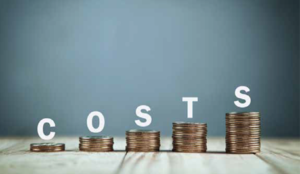The Rising Cost of Running Gas Stations
There is currently a cost- of-living crisis. Translation:
Inflation is back. Big time. In June, US inflation stood at a 40 year high of 9.1% for the 12 months prior. Across the pond, the UK is not faring much better. This means there is less money in consumers’ pockets, which of course impacts their habits at the pump.
A recent NACS survey gave some chilling figures: 60% of drivers say gas prices are the main reason why they drive less (up from 44% in February). Only 1 in 5 are driving more than before the pandemic.
This not only leads to a potential decrease in volumes across the board, but a potential price race to the bottom to try and maintain volumes. What makes this even more worrying is the fact that costs have gone up for retailers too.
In the grand scheme of things, energy used to be pretty cheap. But in Ireland the cost of energy has increased 650% for gas and 195% for electricity. The UK is in a similar state.
UK-based retailer Nick Fraser has been thinking about how to counter these costs. At his site in Marlborough, UK, he is installing 119 solar panels which can cover 17% of the energy usage. Nick is also looking at strengthening canopies to get solar panels on it. Of course, this all comes at a cost, but he aims to reduce his energy bills over time to plan for his long-term business decisions.
There are other options available for retailers too.
Ground source heat pumps that create heat are suited for larger indoor spaces. Putting doors on chillers is a cost saving exercise that shouldn’t break the bank, in terms of initial investment. You can also add light sensors to reduce electricity costs and stop having to rely on members of staff to remember to turn all the lights off when they close up for the day.
But whatever you invest in, it is vital you know your payback period and accept the fact that just as energy costs go up, they can also go down. By making these investments, you know where you stand and can better manage long-term costs. Whether they save in the long run can be secondary.
It’s also important when it comes to your fuel pricing to make sure you understand the margin you need to run a business. One retailer, David Charman, mentioned on Radio 4 UK that he believes a margin of 10 pents per liter (that is close to a whopping 45 cents per gallon) is needed just to cover costs. This will be different for every station, and making sure you are maintaining that margin is essential to these decisions.
That is where EdgePetrol comes in. With access to real-time volumes, weighted and blended margins and fuel profits, you’ll never be looking back with regret at the end of the month. Make sure that the pricing strategies you set today align with your plans for the future.
![]()


